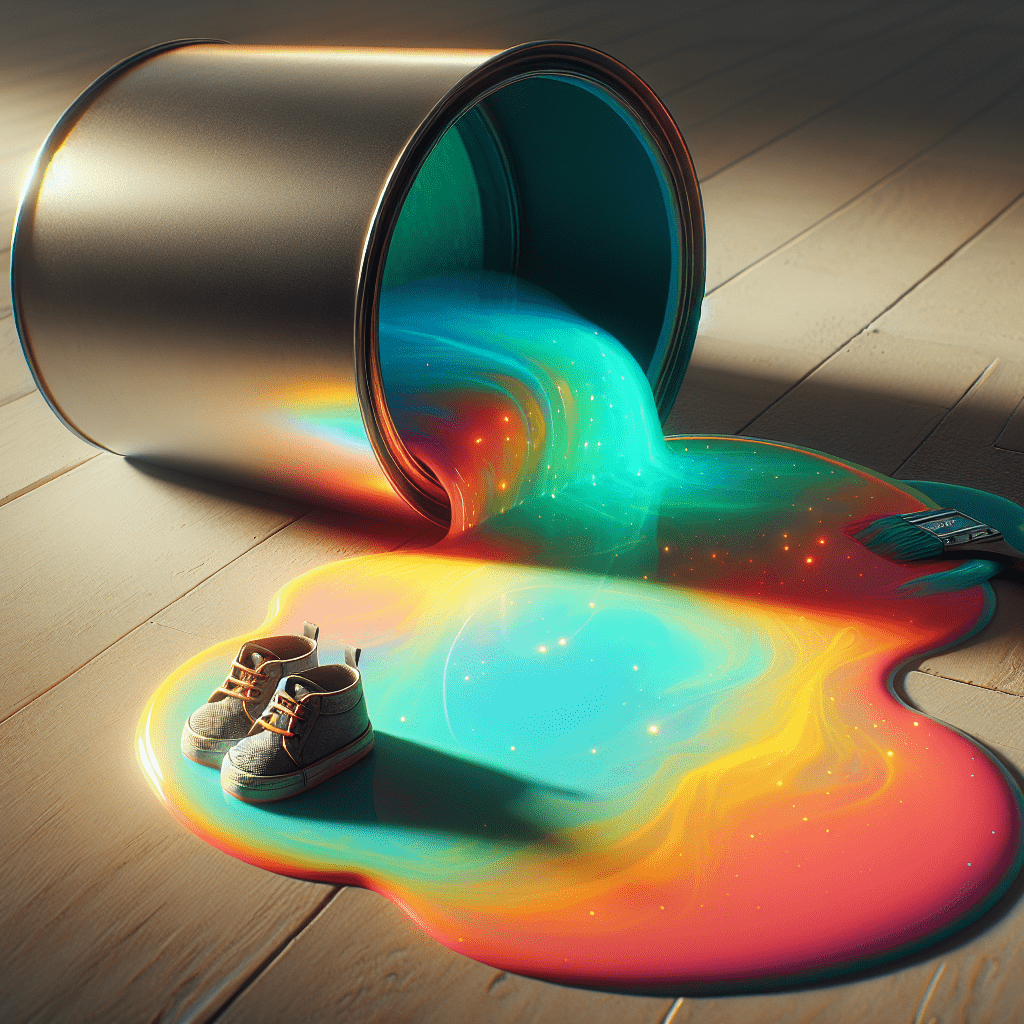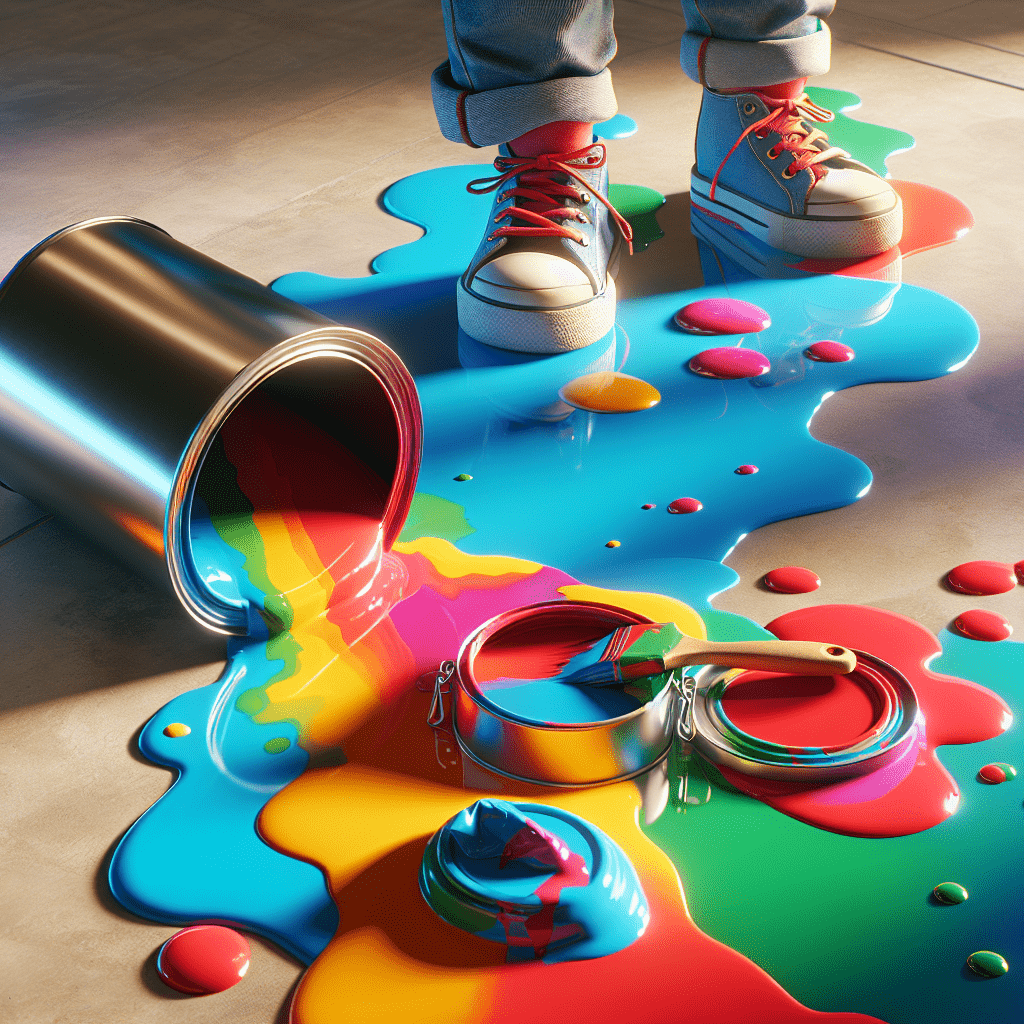Paint pouring is a fun and creative way to express yourself, but it can pose hazards to children. In The Hazards of Paint Pouring and Your Children, we explore the risks including toxic fumes, choking hazards, and skin irritations. Understanding these dangers allows you to take precautions and keep your little artists safe while enjoying their creative adventures.
This article explores the potential hazards of paint pouring and what you need to be cautious about when introducing this artistic activity to your young ones. Art is a wonderful way for children to express their creativity, but safety should always come first.
Understanding Paint Pouring
Paint pouring is an artistic technique where fluid acrylic paint is poured onto a surface, like a canvas, to create abstract pieces with beautiful flow patterns. It’s a popular art form because it doesn’t require any prior painting skills, and the results can be stunning. However, to achieve those vibrant and dynamic looks, specific materials and chemicals are often used.
Common Materials in Paint Pouring
Let’s break down the basic materials and tools involved in paint pouring:
| Material | Description |
|---|---|
| Acrylic Paint | Fluid acrylic paints that come in various colors. |
| Pouring Medium | A product mixed with paint to increase fluidity without diluting colors. |
| Canvas | The surface on which the paint is poured. |
| Silicone Oil | Used to create cells or bubble effects in the paint. |
| Protective Equipment | Gloves, masks, and aprons to protect from spills and fumes. |
Potential Hazards in Paint Pouring
While paint pouring can be an enjoyable and rewarding activity, several hazards are associated with it, especially for children. These hazards can range from exposure to toxic substances to physical risks of slips and falls. Understanding these dangers is essential for minimizing risks and keeping your children safe.
Chemical Hazards
Toxic Components in Paints and Mediums
Many acrylic paints and pouring mediums contain substances that can be harmful if ingested, inhaled, or absorbed through the skin. Children are often more susceptible to these risks due to their smaller body size and developing systems.
- Acrylic Paints: Often contain pigments that may include harmful elements like cadmium or chromium.
- Pouring Mediums: Can emit volatile organic compounds (VOCs) which are harmful to breathe in over prolonged periods.
- Silicone Oil: While not typically considered toxic, silicone oil can still cause skin irritation and lung issues if inhaled in large amounts.
Ensure that you read all labels carefully and choose non-toxic options whenever possible. Look for ACMI AP Seal (The Art and Creative Materials Institute, Approved Product) on product labels to identify safer options.
Fumes and Ventilation
Paint pouring can release fumes not only from the paints themselves but also from adding mixing mediums and other chemicals. Proper ventilation is crucial to ensure that these fumes do not accumulate in your workspace.
Tips for Better Ventilation:
- Work outside if possible.
- Keep windows open and use fans to circulate air.
- Consider wearing masks designed to filter out chemical fumes.

Physical Hazards
Slip and Fall Accidents
When you’re pouring paint, things can get messy quickly. Spilled paint on floors can become a slipping hazard, especially for excited children who might be running around.
Preventive Measures:
- Use a drop cloth or plastic sheeting to protect floors and catch spills.
- Keep the work area well-organized and free of clutter.
- Ensure children understand the importance of walking carefully in the area to avoid accidents.
Skin and Eye Irritation
Even non-toxic paints and materials can cause skin and eye irritation. Children might unknowingly touch their faces or rub their eyes after handling paint, leading to potential issues.
Safety Tips:
- Equip children with gloves to protect their hands.
- Use aprons or old clothing to protect their bodies.
- Have them wear safety goggles to keep paint out of their eyes.
- Wash hands thoroughly after the activity.
Ingestion Risks
Accidental Ingestion of Paint Materials
Children, especially younger ones, have a tendency to put things in their mouths. This becomes a significant concern when using paint and mediums.
Precautionary Steps:
- Supervise children closely during the activity.
- Ensure paints and chemicals are stored in child-proof containers.
- Educate kids about the dangers of putting non-food items in their mouths.
Safe Alternatives
Consider substituting regular acrylic paints and mediums with non-toxic, child-friendly alternatives. Several products on the market are designed specifically for children and are safer to use.
| Material | Safe Alternative |
|---|---|
| Standard Acrylics | Non-toxic, water-based acrylic paints for kids. |
| Pouring Medium | Child-safe alternatives free from VOCs, often marketed as “washable paints.” |

Emotional and Developmental Considerations
Age Appropriateness
Not all art activities are suitable for all age groups. While older children and teens may have the coordination and understanding to handle paint pouring safely, younger children may not.
Assessing the development stage of your child can help determine whether paint pouring is a suitable activity for them. Generally, children over the age of 8 might be better equipped to handle the complexities and risks involved in paint pouring.
Supervision and Participation
Active supervision is crucial. Instead of merely watching from a distance, engage in the activity with your children. Not only does this ensure safety, but it also provides an excellent opportunity for bonding.
Consider initiating the project by doing a test run yourself. This allows you to understand the process and foresee any potential hazards, ensuring you can guide your children effectively when they participate.
Environmental Hazards
Disposal of Waste Materials
Improper disposal of paint and related materials can harm the environment. Leftover paints and chemicals can pollute water sources and soil if not disposed of correctly.
Environmentally-Friendly Practices:
- Use sealable containers for leftover paint to avoid spills.
- Dispose of paint and chemicals at designated hazardous waste disposal sites.
- Avoid washing excess paint down the sink; it can end up in waterways.
Sustainable Alternatives
If you are environmentally conscious, look for eco-friendly paints and mediums. Several companies now offer environmentally safe options that do not compromise on quality.
| Traditional Material | Eco-Friendly Alternative |
|---|---|
| Acrylic Paints containing heavy metals | Water-based, eco-friendly paints free from hazardous elements |
| Silicone Oils | Vegetable oil or olive oil as a substitute |
Steps to Make Paint Pouring Safe for Children
Preparation
- Choose a Suitable Work Area: Select a well-ventilated space, preferably outdoors or in a room with open windows and fans.
- Protective Gear: Ensure all participants are wearing gloves, aprons, and safety goggles.
- Non-toxic Products: Opt for non-toxic, child-friendly paints and pouring mediums.
The Activity
- Set Up: Lay down protective sheets to catch spills and keep clutter to a minimum.
- Supervise Actively: Be an active participant in the activity, ensuring you can intervene promptly if a situation requires it.
- Educate: Teach your children the importance of not ingesting or putting paint materials near their faces.
Clean Up
- Dispose of Waste Properly: Gather all leftover paints and dispose of them at hazardous waste disposal sites.
- Wash Up: Make sure everyone washes their hands thoroughly after the activity.
- Store Materials Safely: Keep all paints and chemicals out of reach of children when not in use.
When to Seek Medical Attention
While we hope that all safety measures will prevent accidents, it’s essential to know when to seek medical help.
Signs to Watch For:
- Ingestion: If a child ingests paint or chemicals, contact poison control immediately.
- Skin Irritation: Persistent redness or rash should be checked by a healthcare professional.
- Breathing Issues: Difficulty breathing after exposure to fumes requires urgent medical attention.
Conclusion
Paint pouring is a delightful, creative activity that can captivate the imagination of children and adults alike. However, it comes with its share of hazards, especially for the little ones. By understanding these risks and taking proactive steps to mitigate them, you can ensure a safe, enjoyable experience for your children.
From choosing non-toxic materials to ensuring proper ventilation and supervising closely, every precaution you take adds a layer of protection for your children. Art should be an expression of joy, not a cause for worry. With careful planning and attention to safety, paint pouring can indeed be a magical experience for your young artists.
Next time you find yourself pondering over the beauty of fluid art, remember that safety comes first when sharing this creative joy with your children. Happy pouring!

